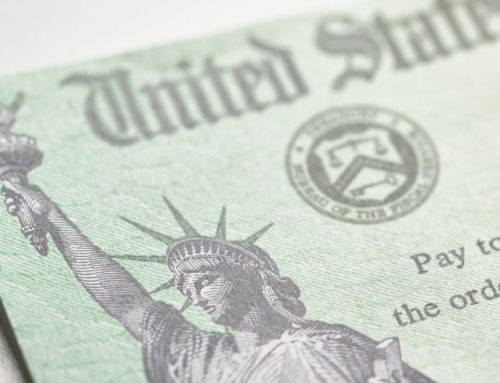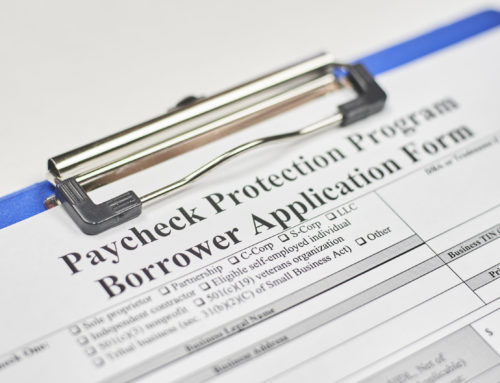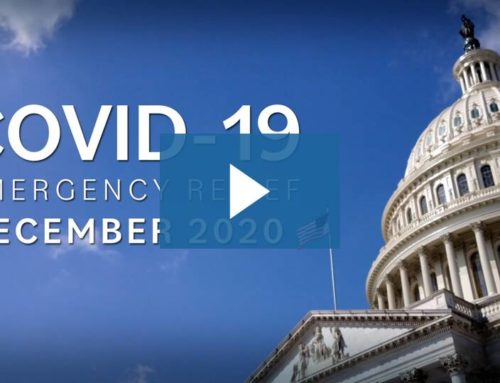Understanding the Families First Coronavirus Response Act (FFCRA)
What Employers Need to Know About Additional Paid Leave for Employees
On March 18th, 2020, the Families First Coronavirus Response Act (FFCRA) was signed into law. It includes provisions for emergency paid sick leave, expanded family medical leave (Expanded FMLA), and tax credits for the employer to pay for both. There are still a lot of unanswered questions around these provisions, exactly how they will work, and other nuances related to them. We expect to get more guidance in the coming days and weeks and will keep you updated as we know more. Here is a summary of the key takeaways that we do know now:
Effective Date: It is effective beginning April 1, 2020 and goes through December 31, 2020. It is not retroactive and cannot be used for any time before April 1, 2020.
Covered Employer: All employers with fewer than 500 employees and all public agencies of any size.
Eligible Employees: The provisions cover all full time and part time employees.
Regular Rate of Pay for Full Time Employees: This is the average of wages, commissions, tips, and piece rates paid over the last six months or over the employee’s tenure with your company, whichever is less.
Calculation of Hours for Part Time Employees or Full Time Employees with Varying Schedules: The hours are based on the average number of work hours in a two-week period. Therefore, you calculate hours of leave based on the number of hours the employee is normally scheduled to work. If the normal hours scheduled are unknown, or if the employee’s schedule varies, you may use a six-month average to calculate the average daily hours.
Overtime: You are required to pay an employee for hours the employee would have been normally scheduled to work even if that is more than 40 hours in a week. However, you are only required to pay up to 80 hours over a two-week period. Therefore, an employee who is scheduled to work 50 hours a week may take 50 hours of paid sick leave in the first week and 30 hours of paid sick leave in the second week, keeping in mind the daily caps as listed below.
Employer Tax Credit: Employers are eligible for a credit against the employer portion of social security taxes for any paid leave under these provisions, along with any additional qualified health plan expenses incurred as a result of the leave (the Department of Labor has not yet issued guidance on how the qualified health plan expenses piece of this will work). If the total sick leave payments made by the employer exceed its share of such taxes, the difference is refundable.
Self-Employed Individuals: Self-employed individuals are also eligible for these provisions. Instead of a social security tax credit, they will receive an income tax credit. The amount of pay eligible for self-employed individuals is equal to the net earnings from self-employment for the taxable year divided by 260. This amount is then subject to the 2/3 limitations and daily limitations of $511 or $200 identified below, depending on the reason for the leave.
Social Security and Medicare Taxes: Any wages paid under these provisions are not subject to Social Security or Medicare tax on the employer or employee.
Employee Notice: Where leave is foreseeable, an employee should provide notice of leave to the employer as is practicable. After the first workday of paid sick time, an employer may require employees to follow reasonable notice procedures in order to continue receiving paid sick time.
Employer Notice: Each covered employer must post in a conspicuous place on its premises a notice of FFCRA requirements. The Department of Labor expects to have a notice available on its website within the next week.
Exemption Available: Small businesses with fewer than 50 employees may qualify for exemption from the requirement to provide leave due to school closings or childcare unavailability if the leave requirements would jeopardize the viability of the business as a going concern. The Department of Labor expects to issue further regulations on how to seek this exemption in the coming weeks.
EMERGENCY PAID SICK LEAVE
Provides up to two weeks (80 hours or 10 days) of paid sick time to the extent that the employee is unable to work or telework. For part time employees it is based on the average daily hours. This is in addition to any other sick or paid time off available to the employee and the employee can elect which they would like to use. The following shows the situations this is available for and the related benefits for each situation:
Situations in which eligible employee may receive 100% of their full pay or up to $511 per day. ($5,110 max)
- The employee is subject to Federal, State, or local quarantine or isolation order related to COVID-19 (unclear at this point if the Illinois Stay at Home Order qualifies); OR
- The employee has been advised by a health care provider to self-quarantine due to concerns related to COVID-19; OR
- The employee is experiencing symptoms of COVID-19 and seeking a medical diagnosis.
Situations in which eligible employee may receive 2/3 of their pay or up to $200 per day. ($2,000 max)
- The employee is caring for an individual who is subject to a quarantine or isolation order; OR
- The employee is caring for the employee’s son or daughter if the school or place of care has been closed, or the childcare provider is unavailable due to COVID-19 precautions; OR
- The employee is experiencing any other substantially similar condition specified by the Secretary of Health and Human Services in consultation with the Secretary of the Treasury and the Secretary of Labor.
EXPANDED FAMILY MEDICAL LEAVE (EXPANDED FMLA)
This provision applies to all employers with fewer than 500 employees even if the employer has fewer than 50 employees and is not otherwise required to offer FMLA benefits. Eligible employees must have been on the employer’s payroll for at least 30 days to qualify. Provides up to twelve (12) weeks of family medical leave in the limited circumstance described below:
Employee Situation: An employee is unable to work (or telework) to care for a minor child (under age 18) if the child’s school or place of childcare has been closed or is unavailable due to COVID-19 precautions.
Employee Benefit: The first 10 days (2 weeks) of the employee’s leave is unpaid, although they may use emergency sick leave or other available paid time off as allowed for the first 10 days. After 10 days, paid leave is required to a maximum of 10 weeks. Eligible Employee may receive 2/3 of their pay or up to $200 per day. ($10,000 max)
Eder, Casella & Co. is working hard to stay on top of the swift moving changes that affect businesses and individuals. We are here to help if you have questions with how these new provisions will affect your business or how to implement them in your business.






